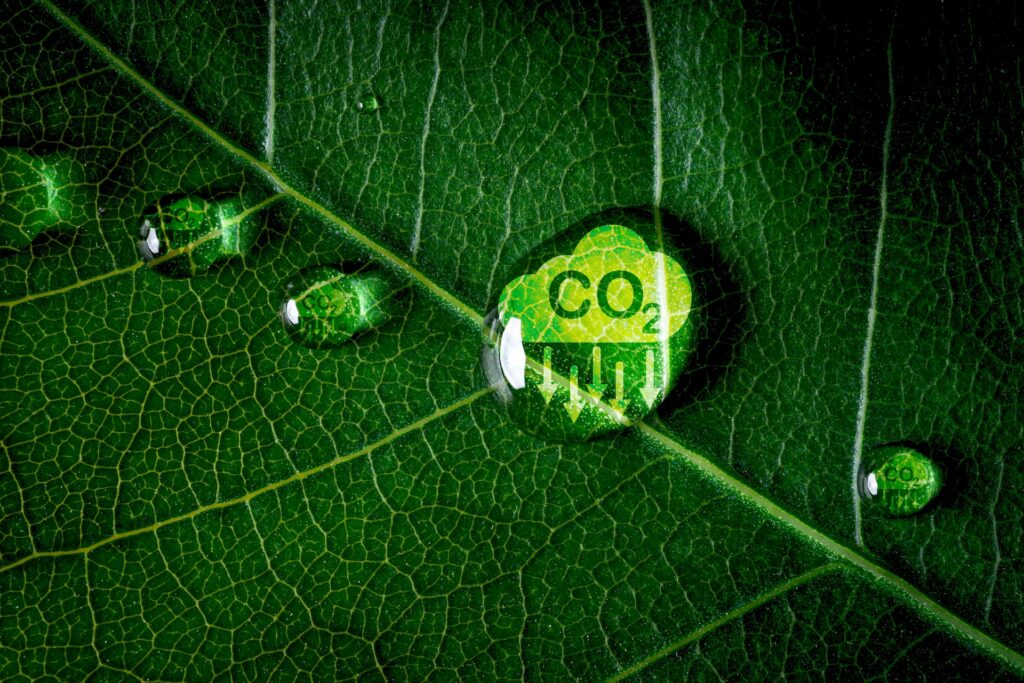We’ve all heard about it. Reduce your Carbon Footprint. But what exactly does that mean, and how do we go about it?
What is the Carbon Footprint?

A carbon footprint is defined as the total amount of greenhouse gases emitted into the atmosphere. Simply put, it registers how much carbon dioxide (CO2), methane (CH4), nitrous oxide (N2O), and hydrofluorocarbons (HFCs) are released. Many things and activities are tied into this footprint – the activities of people, a community, an organization, a process, a product or service, or even an event. Individual carbon footprints are termed as the total amount of greenhouse gases produced by our personal actions such as transportation, household activities, clothing and food.
It is believed that individuals can make a difference by reducing their personal greenhouse gas emissions. While there are many ways to do this and save energy—such as insulating your home, putting up solar panels, and planting trees— here are a few simple and easy changes that anyone can make. They require little effort or financial investment.
The food we eat

One of the best ways to reduce your carbon footprint is to choose both organic and local foods that are in season. Transporting food from far away, whether by truck, ship, rail or plane, uses fossil fuels for fuel and for cooling to keep foods in transit from spoiling.
Also important is to buy in bulk when possible. The production of plastics used for containers harms the environment. They harm you too. Consuming plastic, whether through direct ingestion or indirectly via contaminated food and water, poses significant health risks due to the harmful chemicals that plastics contain and the physical effects of ingesting plastic particles.
Compost your food waste if possible. While it is easy for those who don’t live in major cities to do so, most urban areas do have drop-off sites.
The clothing we wear
Ditch fast fashion. Trendy, cheap items that go out of style quickly get tossed. An average American discards nearly 80 pounds of clothing each year. Where does it go to? Landfills. At these landfills, they decompose and produce methane. In addition, most fast fashion comes from China and Bangladesh, so shipping it to the U.S. requires the use of fossil fuels. Instead, buy quality clothing that will last.
Wash your clothing in cold water. The enzymes in cold water detergent are designed to clean better in cold water. Doing two loads of laundry weekly in cold water instead of hot or warm water can save up to 500 pounds of carbon dioxide each year.
The homes we live in
From many perspectives, it’s always a good thing to do an audit of your home. It shows you areas where energy is wasted and how you utilize energy. It will identify ways to be more energy efficient. And, while you are at it… Change incandescent light bulbs (which waste 90 percent of their energy as heat) to light-emitting diodes (LEDs). Though LEDs cost more, they use a quarter of the energy and last up to 25 times longer. They are also preferable to compact fluorescent lamp (CFL) bulbs, which emit 80 percent of their energy as heat and contain mercury.
Of course, mom and dad were right. Switching off lights when you leave a room, keeping the refrigerator door closed (and not standing in front of it peering in or opening and closing it in search of a snack) is important not just for your electric bill but also for your carbon footprint. In our modern era, we can add to this list: Unplugging your electronic devices when not in use.
The driving we do
Did you know that road rage consumes more fuel? Some studies have found that aggressive driving can result in 40 percent more fuel consumption than consistent, calm driving. Avoiding unnecessary braking and acceleration reduces your footprint. And your stress.
Take care of your car. Keeping your tires properly inflated can increase your fuel efficiency by three percent; ensuring that your car is properly maintained can increase it by four percent. Removing extra weight in your back seat and trunk helps as that helps your gas mileage too.
Finally, when doing errands, try to combine them to reduce your driving. Use traffic apps (like Waze) to avoid getting stuck in traffic jams, and, on longer trips, use cruise control. It helps your fuel efficiency.
The flights we take
If you fly, and most of us do, air travel is probably responsible for the largest part of your carbon footprint. There are several ways to lessen this footprint when you’re up in the air.
First, if possible, fly nonstop. Landings and takeoffs use more fuel and produce more emissions. Another tip is to go economy. Yes – you read that right. Business class is responsible for almost three times as many emissions as economy. Why? Because in economy, the flight’s carbon emissions are shared among more passengers; first class can result in nine times more carbon emissions than the back of the plane.
By now, we have all heard about carbon offsets too. Generally, regarding air travel. These are amounts of money that you can pay to counteract the gasses that you have created. If you offset one ton of carbon, the offset will help capture or destroy one ton of greenhouse gases that would otherwise have been released into the atmosphere. Offsets also promote sustainable development and increase the use of renewable energy.
Offsets are estimated using a carbon calculator. This calculator estimates the carbon emissions of your flight and the amount of money needed to offset them. For example, flying economy roundtrip from New York to Los Angeles produces 1.5 tons of CO2; it costs $43 to offset this carbon. For those wishing to know their carbon footprint, there are many companies that (for a fee) will calculate it for you. There are also online websites that can guide you through a process so that you can do it on your own.
If you want to try and reduce your carbon footprint, it’s not that difficult. There are many ways to implement small changes that will make a big difference. To the environment, to your wallet, and to your health. Believe it or not – they are all intertwined.



